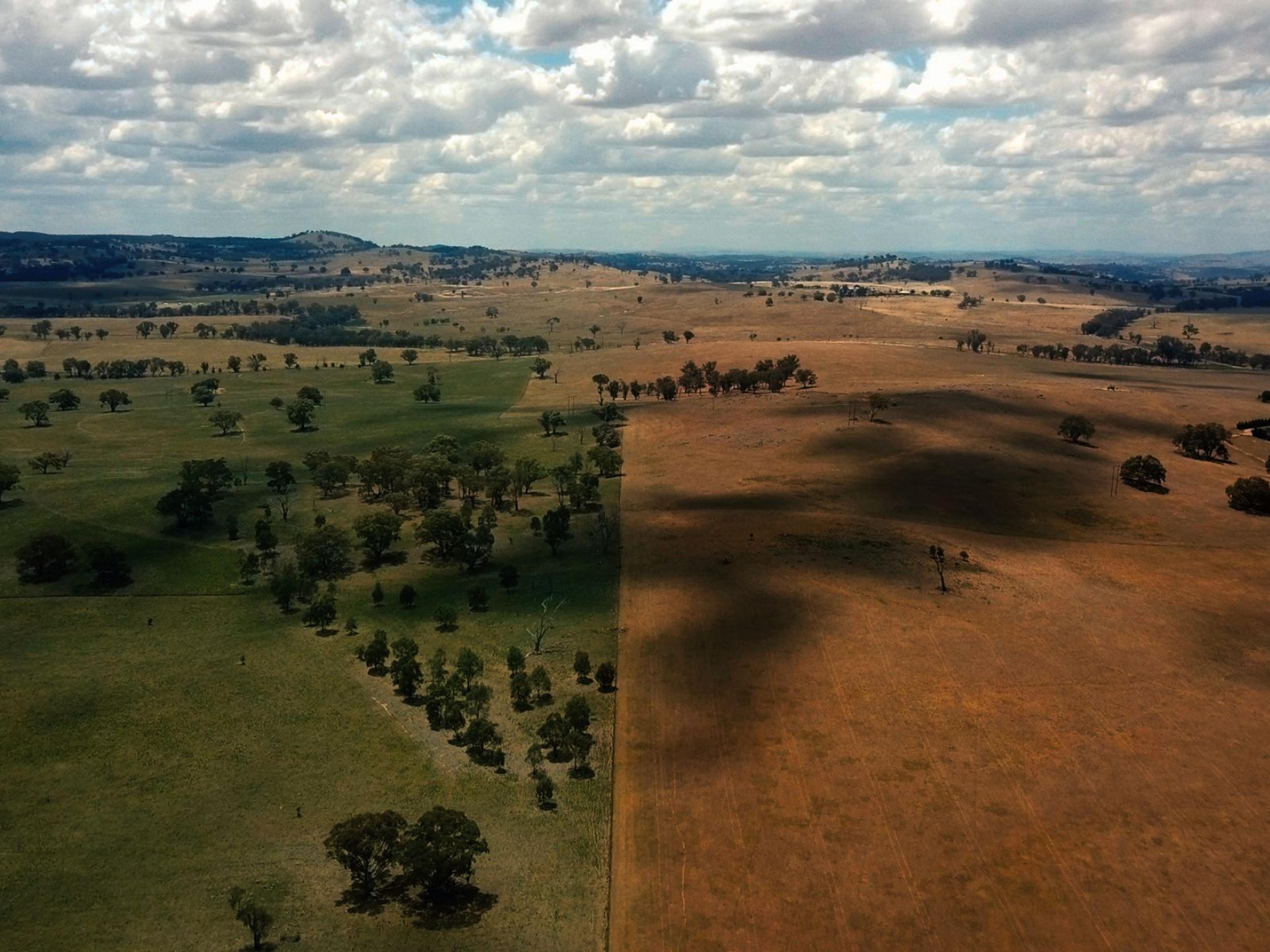Why We Choose Regeneration
“Regeneration means putting life at the centre of every action and decision.”
— Paul Hawken Regeneration, 2021
At Sustainable Table, we're not focused on actions that are window dressing or slight alterations to business as usual.
Our focus is on the deep transformative work that is underway to reconfigure our food and fibre systems. Actions that not only ‘do less harm’ and operate within planetary limits, but actively regenerate — restoring ecological and social communities, sequestering carbon, reconfiguring right relationships, and renewing soil and water cycles.
Regeneration is the broad term we use for this work. We want to take a little time to explore what we mean by this word we use with careful intent.
A regenerative approach, from our understanding, is one that enables the regrowth, renewal or restoration of systems and relationships, including those that have been damaged or lost. In the words of Paul Hawken, this means...
“...putting life at the centre of every action and decision... and it applies equally to families, communities, cities, schools, religions, cultures, commerce and governments.”
In short, regeneration is a task for all of us.
The first thing to spell out is that the knowledge and thought systems that underpin regenerative approaches are nothing new but have their roots in First Nations cultures across the world.
Secondly, if we are to be true to the understanding of regeneration as enabling regrowth, renewal and restoration, then it follows that in the context of the colonial foundations and ongoing patterns of agriculture in Australia, we need to step forward in a new way.
This new way must face up to the task of (re)conciliation and reparations with our First Peoples, to do the difficult and necessary tasks of truth-telling and listening. We need to acknowledge that agriculture was at the forefront of the systematic dispossession, genocide and enslavement of First Nations people across the continent. For a long time we have denied this history and in turn dismissed, patronised, excluded and co-opted the cultural knowledge systems which underpin the ecology of these lands and waters, and have done for upwards of 60,000 years.
A regenerative future isn’t possible without this restorative work and our First Peoples front and centre in the journey forward.
In the course of this research, we have thought long and hard about the term regeneration.
Current applications of the term can leave it open to co-option by corporate interests and the replication of existing unequal power and resource dynamics that constitute the current industrial system. This is where we look to agroecology, a term that is used more in Europe and the Global South than in the USA and Australia. Agroecology is expressly and consciously political - focused not just on farming practice and science but also on movements for sovereignty and equity for farmers, workers and communities.
Given regenerative is the term that has captured the Australian lexicon and imagination, we need to make sure we deepen the framing of the word to the agroecological level to avoid reducing it to a light coat of green paint.
The work of regeneration centres equity, restoration and right relationship.
Let's make this a bit more tangible in relation to the focus of this roadmap - our food and fibre systems.
Regenerative agricultural systems operate on an evolving set of principles that are applied uniquely across different land and production contexts but basically boil down to:
- Eliminating bare soil and avoiding tillage
- Fostering plant and animal diversity
- Using more perennials
- Encouraging water percolation into the soil
- Integrating livestock and cropping
Regenerative agriculture has been defined as, ‘... an ecological approach to farming that allows landscapes to renew themselves’ (Massy 2018).
We broaden this out beyond the farmscape to food and fibre systems which enable landscapes, communities and beings to self-organise towards life.
Fundamentally, this work does not follow a recipe - but instead is guided by principles that are adapted and renewed by different hearts and hands across multiple contexts. One of the most succinct summations of these principles for practical application is the checklist the Drawdown team developed for the book Regeneration - a tool to guide actions and decisions for every scale of endeavour. This checklist is provided in full below for your consideration.
Regeneration Checklist
- Does the action create more life or reduce it?
- Does it heal the future or steal the future?
- Does it enhance human well-being or diminish it?
- Does it prevent disease or profit from it?
- Does it create livelihoods or eliminate them?
- Does it restore land or degrade it?
- Does it increase global warming or decrease it?
- Does it serve human needs or manufacture human wants?
- Does it reduce poverty or expand it?
- Does it promote fundamental human rights or deny them?
- Does it provide workers with dignity or demean them?
- In short, is the activity extractive or regenerative?
- Hawken, 2021:249
Context
We want to emphasise a couple of things briefly, again drawing on the planetary boundary framework:
Biosphere Integrity
Regenerative systems reverse biosphere degradation because they all fundamentally require avoiding bare ground, enhancing/restoring plant diversity and vegetation, and maintaining perennials and living root systems in soil.
Land Use Change
The ability of regenerative farming practices to restore biodiversity, key landscape functions and ecosystem resilience is gaining increasing recognition. For example in Australia, where we have transgressed the land use change safe operating boundary to devastating effect, regenerative grazing practices (in the form of adaptive multi-paddock grazing) enable natural tree regeneration at almost the same rate as if grazing pressure were to be totally removed. Some regenerative grazing farms could see tree canopy cover more consistent with original vegetation patterns through silvopasture systems.
Biogeochemical Flows
Regenerative systems minimise, if not eliminate, reliance on synthetic inputs - a significant shift for a nation that currently uses 1.5 times more N and 6 times more P than is deemed a safe operating limit, with multiple impacts across our degrading water catchments.
Climate Change
Regenerative systems enable a land use shift to capture more carbon in soils and vegetation and reduce emissions:
- Adaptive multi-paddock grazing has been shown to sequester 20% more carbon in soils compared to conventional systems.
- Regenerative annual cropping and low input no-till vegetable production systems have been shown to sequester higher levels of carbon than conventional systems, and reduce reliance on emissions-intensive inputs.
- Full life-cycle assessments of regenerative wool conducted by Fibreshed are also showing the potential for these systems to drawdown more carbon equivalent emissions than they create.
(Information adapted from Fischer 2009, Teague and Krueger 2020, Climateworks Centre 2022, WWF 2021, Rogers 2012, Project Drawdown 2020, Burgess 2019, Badgers et al. 2014)
We also want to point towards the fact that regenerating our food and fibre systems extends beyond the farm gate. As discussed earlier, our supply systems are structured by concentration and consolidation patterns, which pose a significant resilience issue.
Our global and Australian markets are impacted by cascading risks and shocks, from Varroa Mite to Foot and Mouth disease, from Covid to the Ukraine-Russian conflict, let alone the increasing incidence of extreme weather events. The global 'just in time' supply logistics and distribution structures of our current systems are vulnerable to this increasing volatility - a shock to one component in centralised systems can shut down the whole chain.
We need to shift our focus to building generalised resilience, through diversity, redundancy and modularity so that when one part of the system falls down, there are other parts that can quickly rise to fill the need.
These factors are characteristic of diverse regional food economies and short supply chains which are key components of regenerative systems. Their capacity to underpin resilience in a world where we are likely to experience escalating supply chain shocks is becoming increasingly important. This work to reconfigure our systems beyond the farm level requires shifts in infrastructure, which is currently geared for the global 'food from nowhere' state of play, alongside accompanying shifts in culture, finance, community structures, legislation, and education.
To repeat - regeneration is a task for all of us.
“One of our theories has always been that regional food systems are more resilient than the centralised mainstream model. When Covid hit that theory was put to the test in a way I never imagined.
And we saw how fragile and brittle a hyper-efficient system can be.
We saw those systems break down — at the same time we saw our regional systems step into the fold but it also became apparent how under-invested our regional infrastructure is to be able to meet the demand asked of them.”
— Esther Park | Cienega Capital | Croatan Institute 2022b
This article is taken from Regenerating Investment in Food and Farming: A Roadmap.
Image credit (left): Farmer's Footprint Australia

